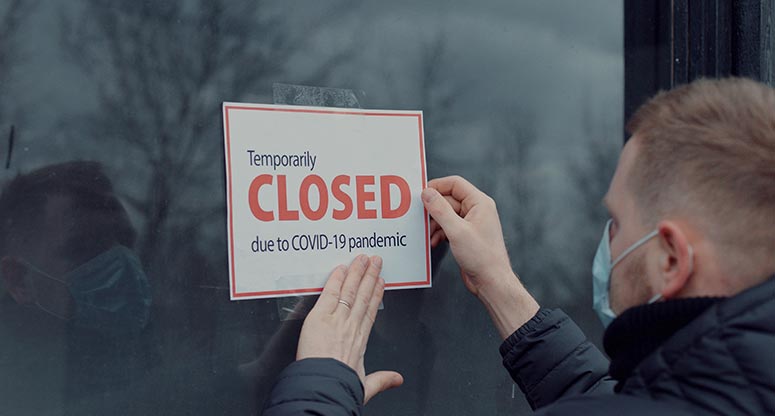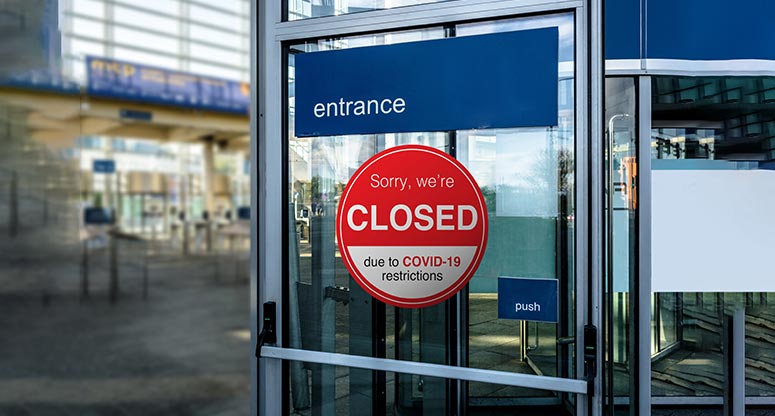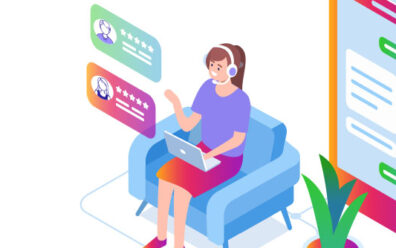Call Center Outsourcing5-minute read
Customer Service During Lockdown: Is Your Call Center Prepared?
We’re just months into a new decade, and already, everything has changed. The world is enduring a once-in-a-century crisis—COVID-19. The virus shut down much of public life and forced most businesses to work virtually.

Nobody can say for certain how many months, or even years, it’ll take to get back to normal—and if “normal” will ever be the same.
For those businesses still in operation, the need for fast-and-safe customer service has only intensified. More housebound shoppers, stranded travelers and telemedicine patients are online—calling, chatting and texting for help.
Traditional sources for service, brick-and-mortar call centers find themselves in the coronavirus crosshairs, however.
With their crowded workspaces, call centers are not compatible with the need for social distancing and continuous cleaning. And few companies can simply shift their operations to a virtual in short order—and maybe, even for the long term.
As a result, customer care has suffered, even among those businesses still operating at (more or less) normal volume. So intense has the shortage become that customer service providers have “stopped taking on new clients to free up resources for existing ones,” write Sharon Terlep and Sarah Krouse in a Wall Street Journal article that’s rattled some economic observers.
“Many customers who call the hotlines of airlines, retailers and financial-services firms, among almost every other industry still operating, encounter hours-long wait times, hearing recorded messages saying help is currently unavailable,” they add. “Some companies ask that customers manage their issues online or suggest that they hold off on seeking assistance altogether.”
Many customers who call the hotlines of airlines, retailers and financial-services firms, among almost every other industry still operating, encounter hours-long wait times, hearing recorded messages saying help is currently unavailable,” they add. “Some companies ask that customers manage their issues online or suggest they hold off on seeking assistance altogether.
Is the Traditional Call Center Incompatible with COVID-19?

Traditional call centers, with close-quarters, must usually be reconfigured to meet COVID-19 guidelines rules.
Source:www.shuttterstock.com.
Author: Supamotion.
The problem is not a surprising one. Traditional call centers, with close-quarters, must usually be reconfigured to meet COVID-19 guidelines rules. During a time of social distancing, when crowded offices have been all but banned, operators of busy, high-volume centers are simply unable to bring them fully online.
That’s not the only obstacle to customer care presented by the crisis. Many companies are experiencing shortages after outsourcing service to countries that have already been locked down. Even some businesses with long-established, remote-work policies have been caught off-guard by the sudden need for virtually every employee to work from home.
(This applies to household names, too, as it turns out: The WSJ authors describe how, while Verizon Communications Inc. had a work-from-home rotation system in place for its call center workers, the scope of having to move nearly all of them to remote work as quickly as possible led to some unexpected challenges.)
The shift to virtual work also means that all of the equipment normally used by on-site call center workers must now be available for every home worker. As the WSJ authors point out, this “requires computers formatted with adequate security and workflow systems as well as a broadband connection that can accommodate voice-over-internet calls and a headset.”
- Can we really safeguard the health of people working in our call centers?
- Do we need to shift communications to a completely virtual environment?
- If so, how can we ensure seamless operations and full security?
What Does This Mean for the Way You Conduct Customer Service?

The work customer service professionals do can easily be performed off-site.
Source: www.shutterstock.com.
Author: Ken stocker.
There is a silver lining to this ominous cloud. The truth is, the work customer service professionals do can easily be performed off-site—a fact well known to businesses that already engage the services of a virtual contact center.
But as we’re seeing, making the shift to virtual work isn’t something that should be—or can be—rushed. The proper equipment and software must be assessed, remote-work guidelines created and shared, and security protocols created and enforced, among many other operational and logistical steps.
With the right amount of time and expertise, though, it’s not only possible to implement a secure-and-efficient virtual workforce, it’s practically a necessity. The current crisis has made our new reality unmistakable: We’re now firmly in the age of the virtual workplace, which will increasingly become the de facto mode of doing business.
What does this mean for traditional call centers?

The days of the brick-and-mortar call center may finally be numbered.
Source: www.shutterstock.com.
Author: DigitalMammoth.
It means a faster shift to the virtual model of customer care. The days of the brick-and-mortar call center may finally be numbered. If you’re already leaning virtual in your customer communications, you’ll want to lean a little faster. If you haven’t yet gotten started, consider the coronavirus your call to action.
Next, businesses and call centers must step up their commitments to security. If even a few of your team members work from home, the security of your entire IT system must reflect a complete strategy for a virtual workplace, including firewalls, VPNs, authentication protocols— the whole shebang.
The use of automated services like chatbots and prompt-based UI will grow. Already a key tool for effective customer service, automation helps people make basic transactions, such as arranging a refund for a hotel room or a prescription pickup without involving a human agent. Their use in call centers is on the rise and will only speed up with COVID-19.
Calling all centers! Need a hand adjusting your infrastructure to the virtual workforce? We’re a leading virtual call center services provider with decades of experience. Contact us here for a free consultation.
The Continuing Evolution of Customer Service Delivery

With the crisis putting such stress on our way of life, preserving easy communication with your customers is more important than ever.
Source: www.shutterstock.com.
Author: bbernard.
Describing a rapidly evolving situation—in which customers shifted focus from travel cancellations to energy concerns to calls to banks and healthcare providers—the WSJ report illustrates how unexpected events can raise a need for instant communications scalability. And, as we’re learning from the current crisis, that need can arise at any time, for any industry.
When faced with doubled call volumes, for instance, United Airlines enlisted temps and part-time workers, and even senior executives helped out by taking calls. At a time when human contact has all but vanished from public life and the gulf between you and your customers seems larger than ever, a few executives jumping on customer calls doesn’t sound like a bad idea.
But a smarter approach would be seizing the opportunity presented by the current situation to build a build a better and more flexible service plan. One that’s based on a firmer foundation, and that uses cutting-edge security, integrates social-distancing best practices, and is fully compatible with virtual work.
Not all of these steps will be new. Businesses that have already implemented a cybersecurity framework (CSFs) can be confident of an extra layer of protection for the data they process, for example. And organizations that have already embraced some level of virtual networks will be starting with an advantage.
For many, though, the realities of implementing secure virtual systems will require a great deal of focus and attention. With the current crisis putting such stress on our way of life, preserving easy communication with your customers is more important than ever.
In fact, ensuring that virtual channels are always open may be one of the most urgent lessons COVID-19 has to teach us.

Need help transitioning your call center or customer service strategy to an on-demand, virtual operation? We can help, as a leader in remote-workforce customer service. Contact us today to consult one of our experts.
We can help.
This Might Interest You...
This website uses cookies to personalize and improve your experience. Continue browsing our site if you agree to our Cookie Policy or feel free to Manage Cookies yourself.


